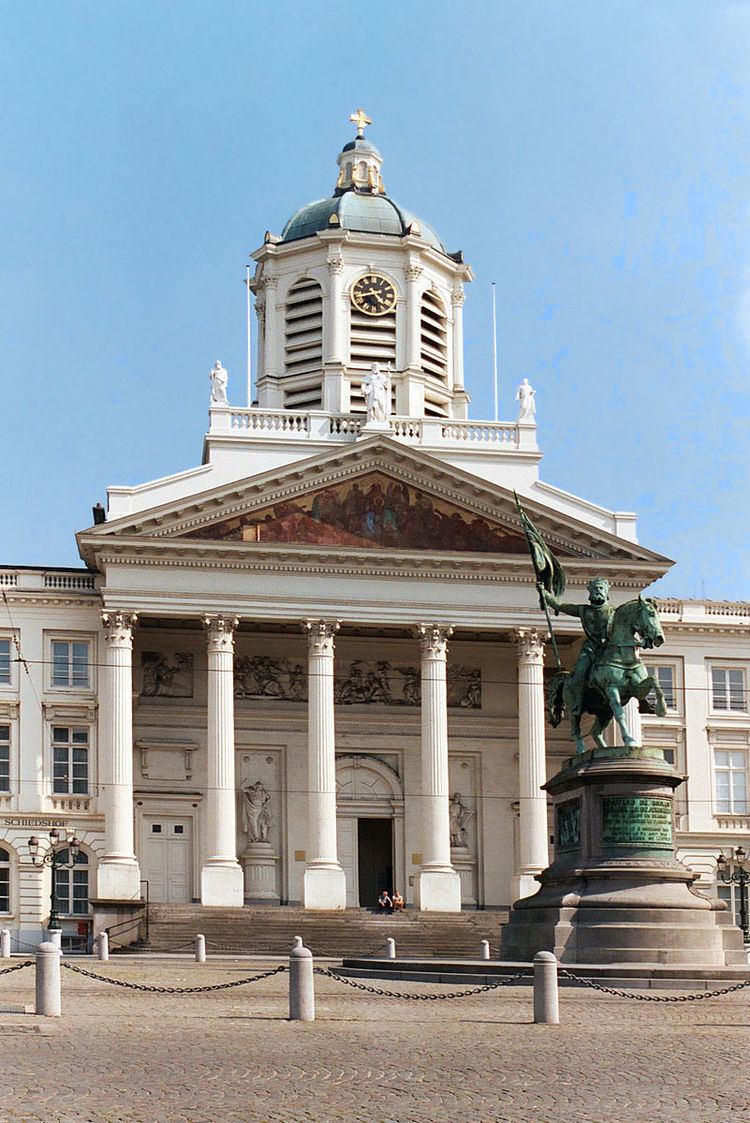 | ||
Neoclassical architecture (French: Architecture néoclassique) appeared in Belgium during the period of Austrian occupation in the mid-18th century and enjoyed considerably longevity in the country, surviving through periods of French and Dutch occupation and the birth of Independent Belgium, surviving well into the 20th century.
Contents
- Origins of neoclassical architecture
- Neoclassicism in the Austrian Netherlands
- Theresian Style
- Phases
- Austrian period 175992
- French period 17921815
- Dutch Period 181530
- Reign of Leopold I 183065
- Neoclassical Eclecticism 18651909
- Late Neoclascissism 191080
- Monumentalist Classical Architecture 192959
- Postmodernism after 1980
- References
Origins of neoclassical architecture
Neoclassicism in architecture was the result of renewed interest in the architectural forms of Greco-Roman antiquity discovered in the excavation of sites such as Pompeii and Herculaneum in the 18th century.
Its spread in Europe was driven by:
Neoclassicism in the Austrian Netherlands
Growth of the neoclassical style in the Austrian Netherlands took place from 1759 during the reign of the Empress Maria Theresa of Austria and the governorship of his brother Charles-Alexandre de Lorraine.
The growth of the style was aided by various elements including:
Theresian Style
The neoclassical style is known as the "Louis XVI style" in France, however the parallel development of the style in the Austrian Netherlands is sometimes called "Theresian style" (French: Style thérésien) in reference to the Empress Maria Theresa of Austria.
Phases
It is possible to divide the architects and their major works according to the diverse phases of neoclassicism in Belgium and the distinct periods of political occupation.
Austrian period (1759–92)
French period (1792–1815)
Since the period of French occupation was characterized by the long-running French Revolutionary and Napoleonic Wars, few outstanding neoclassical works were constructed.
Dutch Period (1815–30)
In 1815, the Southern Netherlands were united by the Congress of Vienna with the Dutch United Provinces to form the new Dutch-led "United Kingdom of the Netherlands".
Under William I, many of the most significant neoclassical buildings were constructed in Brussels, including the Palais des Académies, Monnaie Theatre, Botanical Gardens, Royal Observatory and the Royal palace, precursor of the modern palace.
Reign of Leopold I (1830–65)
Neoclassical Eclecticism (1865–1909)
King Leopold II (1865–1909) was a prodigious builder, who launched various constructions of large buildings to demonstrate the prestige of the monarchy.
However, during his reign, the Eclectical style, appeared with Poelaert under Leopold I became predominant, mixing various forms from neo-Romanesque, Gothic, Neo-Renaissance and Neo-Baroque as well as neoclassical schools.
Neoclassicism under Leopold II was no exception. Some buildings from this period, such as the Bourse de Bruxelles or Palais de Justice were openly eclectic, others cited below, can be broadly considered as neoclassical, without however exempting them from the banner of characteristic decorative eclecticism.
Note that many of the buildings commissioned by Leopold II incorporated his monogram, consisting of two letters L symmetrically
Late Neoclascissism (1910–80)
In the 20th century, neoclassicism nearly disappeared, swept away by new waves of architectural styles including Art nouveau (which was very popular in Brussels), Art Deco, Modernism and functionalism.
In Brussels, the survival of the style is owed to the planning laws governing the construction of buildings in the vicinity of Brussels Park, as well as the desire to preserve the stylistic unity of the neighborhood.
Monumentalist Classical Architecture (1929–59)
During the Interwar period, a style developed in several European countries using neoclassical architecture on a much bigger (monumental) scale.
In the 1930s, this was often associated with totalitarian regimes like Nazi Germany, but the style is often wrongly labeled as Fascist architecture like Stalinist architecture, Nazi architecture or Soft Portuguese style. However, it was also found in democratic countries like Belgium, France (for instance the Palais de Chaillot), Great Britain and the United States.
Postmodernism (after 1980)
At the end of the 20th century, neoclassicism reappeared in a revitalized form incorporated in the Postmodern Style. This postmodern neoclassicism is most commonly used in the construction of offices and municipal buildings.
